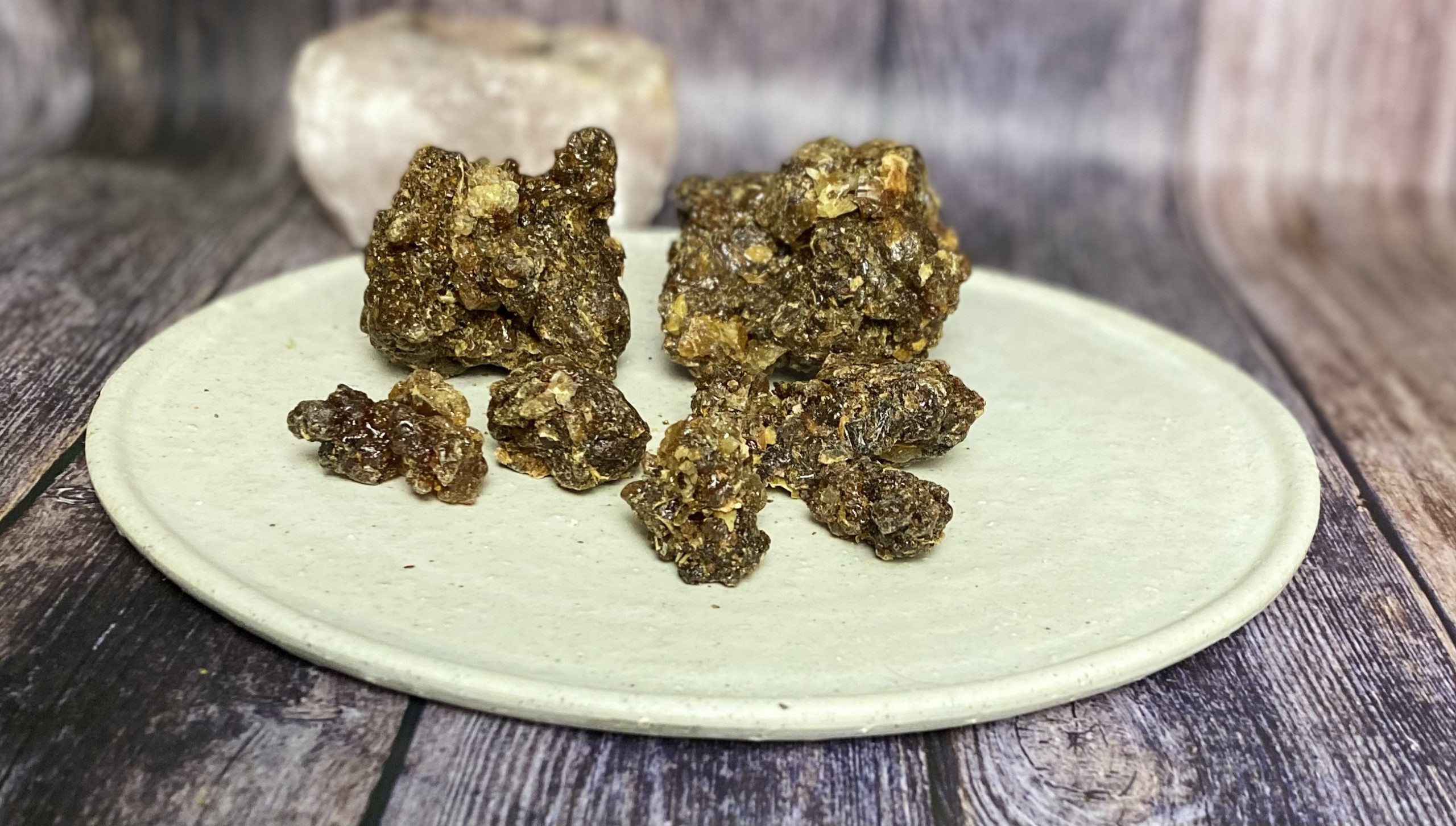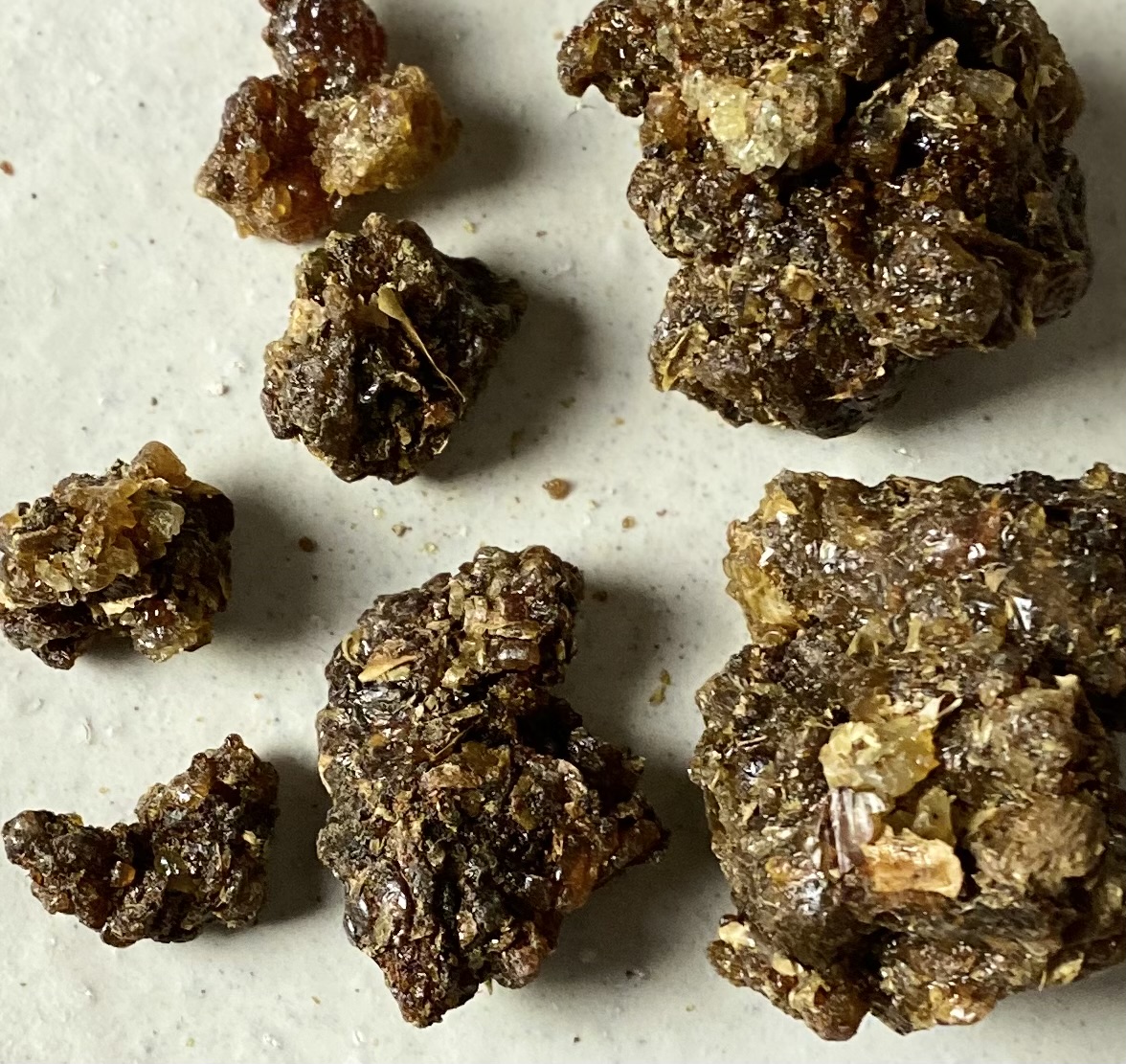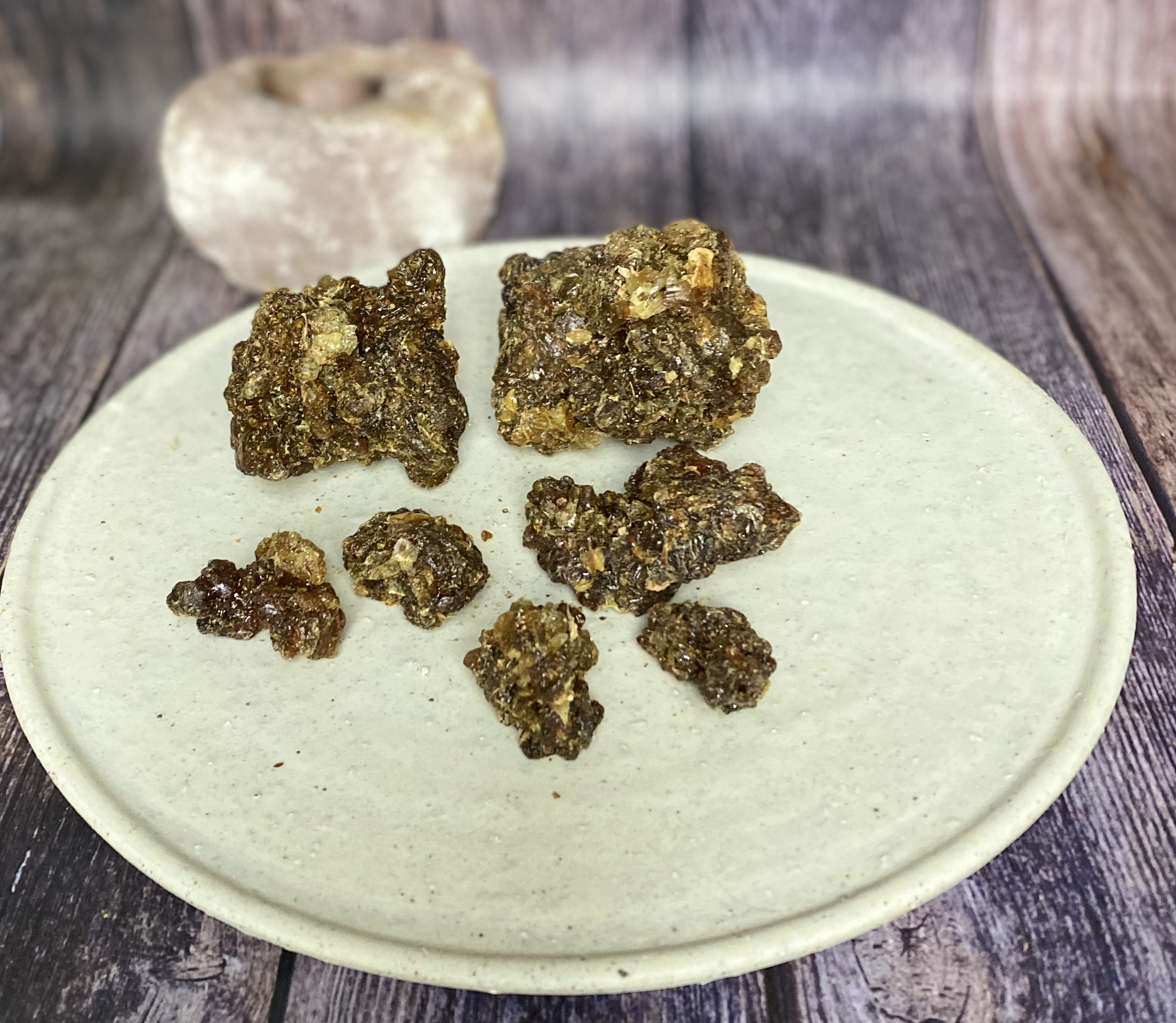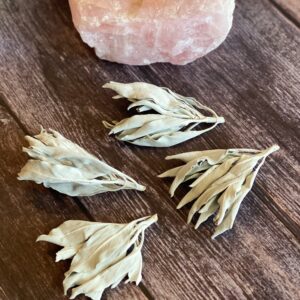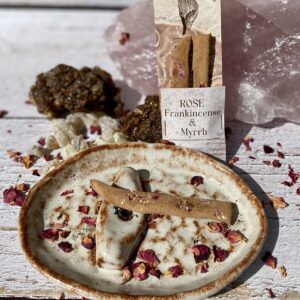Description
First Grade Myrrh (Commiphora Myrrha Myrrh)
Please make sure you keep your Myrrh in a cool dark place, I put mine in the fridge.
100% pure Yemen Myrrh resins from the Yemen region. Sustainably harvested. Has been used internally for many ailments – please do your own research into it. It is a truly AMAZING resin.
Myrrh is a gum-resin, which is extracted from the bark of the balsam tree called “myrrh tree”. It is an anti-bacterial and very powerful analgesic. Myrrh is known to relieve mouth infections such as sore throat or gingivitis. It is also applied to the skin to heal wounds.
Myrrh is a gum-resin, which is extracted from the bark of the balsam tree called “myrrh tree”. It is an anti-bacterial and very powerful analgesic. Myrrh is known to relieve mouth infections such as sore throat or gingivitis. It is also applied to the skin to heal wounds.
This is a rare and sacred myrrh and it is sourced from Socotra Island in Yemen. This truly is a special resin and due to its scarcity it can take months to harvest.
Myrrh is used for indigestion, ulcers, colds, cough, asthma, lung congestion, arthritis pain, cancer, leprosy, spasms, and syphilis. It is also used as a stimulant and to increase menstrual flow.
Myrrh is applied directly to the mouth for soreness and swelling, inflamed gums (gingivitis), loose teeth, canker sores, bad breath, and chapped lips. It is also used topically for haemorrhoids, bedsores, wounds, abrasions, and boils.
In foods and beverages, myrrh is used as a flavouring component.
In manufacturing, myrrh is used as a fragrance, in incense, and as a fixative in cosmetics. It is also used in embalming.
Therapeutic influences.
Women in Yemen and Arabia use myrrh to clean the uterus.
How to do it?
A few grains of myrrh must be macerated overnight in 1L of water to be drunk all day long more or less 3 days before and after menstruation so that the cycle is regulated to have less painful periods. This same preparation is used for 7 days for the cleaning of the uterus following a miscarriage, this avoids a curettage cleaning ..
In Yemen myrrh is used to unify the complexion, give the skin its elasticity and also to fight the acne pimples.
How to do?
Powder a few grains in a half cup of warm water to infuse until the resin dissolves, then apply to the face and neck using a cotton. After thorough drying, rinse with clean water. Please repeat the operation 1/2 day for a month.
Myrrh is used in incense to purify the air but also in a burnt incense.
High Grade
Myrrh can help decrease swelling (inflammation) and kill bacteria.
USES & EFFECTIVENESS
Insufficient Evidence to Rate Effectiveness for…
- Indigestion.
- Ulcers.
- Colds.
- Cough.
- Asthma.
- Congestion.
- Joint pain.
- Haemorrhoids.
- Bad breath.
- Sore mouth or throat.
- Other conditions.
More evidence is needed to rate the effectiveness of myrrh for these uses.
Myrrh is the sticky, dry resin of a certain forlorn desert tree, Commiphora myrrha. Myrrh is extracted by piercing the bark of the tree and returning later to collect the nuggets of dried sap. True to Myrrh’s reputation as a funerary herb, these pieces are sometimes called “tears.”
Ancient Egyptians used Myrrh, along with linen and natron, to embalm the dead. The resin both perfumes and preserves the body of the deceased. The Ebers papyrus (a document written around 1500 BCE contains over 800 medicinal formulas, many of which are based on a mixture of honey and myrrh. The antimicrobial and antioxidant properties of both substances are now known to science. Myrrh gum was also used by the ancients to treat infection, bruises, skin conditions, and toothache.
Myrrh trees grow wild in the shallow, rocky soil of desert regions. The main producers are Ethiopia, Kenya, and India. All are Commiphora myrrha, but the aroma and strength varies by region. The quantity (and quality) of Myrrh on the world market has been in decline for many years.
For the Witch’s pantry, Myrrh is available in resin and anointing oil form. There are also Myrrh-scented candles, incense, and bath products available. “Garden Myrrh,” also called Sweet Cecily, is an unrelated herb akin to Anise.
Myrrh essential oil is distilled from the resin and is moderately expensive compared to other essential oils. The pure essential oil is gummy and sticky. It needs to be thinned to be free-flowing. Myrrh oil contains a complex bouquet of chemical compounds and is not easily synthesized or mimicked.
Magickal Uses of Myrrh
Myrrh is one of the sacred incenses of the Bible. It is mentioned several times in the Old and New Testaments. Myrrh represents Christ’s suffering—the gift of Myrrh by the Magi presages his death and entombment. The evangelist Mark says that Christ was offered wine mixed with Myrrh prior to the crucifixion. Myrrh (mixed with Frankincense) is still used in the church incenses of many Christian denominations.
Myrrh is sacred to the Great Mother, whether she is called Mary, Isis, or Binah. (The names “Mary” and “Myrrh” both probably derive from the Hebrew word for “bitter.”) It is an herb of the ancient Goddess, especially in her aspect as She Who Mourns and who hears the cries of the mourning.
As an incense and anointing oil, Myrrh can lead to rich and rewarding meditation (especially introspection). It is used to heal personal sorrow and to connect with the dead and the Underworld. Myrrh is rarely used alone. Its character is somewhat malleable depending on what it’s blended with.
Correspondences of Myrrh
Myrrh is a complex scent, and there’s several different energies bound up in it. This ancient, multi-layered treasure just refuses to be pegged.
Myrrh thrives in full sun and was used in ancient Egyptian rites as an incense of Ra, so there are sources that argue for a Solar correspondence. The plant’s vicious thorns and dark, blood-like resin even lead some to reach for Mars. Greek soldiers carried vials of Myrrh to stop bleeding wounds—another tick in the Mars column.
However, most writers (including influential Wiccan author Scott Cunningham) have listed Myrrh as an herb of the Moon, especially the Dark Moon. This makes more sense, given the resin’s strong feminine history. The flowers are white (typical of Lunar herbs). A secondary planetary match would be Saturn, which rules darkness and endings.
Given Myrrh’s ancient connections to the Sun/Mars and its protective properties, some people link it to the element of Fire. But as a non-irritant and a healing balm, Myrrh is a misfit in the Fire category.
How about Water? Because the Moon pulls on the sea and rules psychic matters, a lot of Lunar herbs get automatically sorted onto the Water shelf. Myrrh certainly has some Watery attributes: Its ties to sorrow, contemplation, and the womb. Like tears of grief, Myrrh leads us into the depths of emotion in order to work its healing magick.
Yet Myrrh is not a traditional Water herb, either. It grows in the desert and bears small dry fruit. The usable part is brittle, dark, and viscous. I think of it more as a Moon/Earth herb than a Moon/Water herb.
The energy of Myrrh evokes both the dark ancient earth and the great black sea. Ritually, it is used to heal grief, nurture wisdom, and honour the dead.
Spells and Formulas with Myrrh
The fabled combo of Frankincense and Myrrh has never been improved upon. It makes an incredibly powerful and balanced incense for cleansing, protection, and more.
A musky-sweet blend of Myrrh, Patchouli, and Damiana is recommended by cat yronwode as an incense for sexual magick.
Burned before ritual, Myrrh rids the area of negative vibrations. It helps cultivate wisdom and self-healing.
The Greek Magical Papyri contain an attraction spell using Myrrh. The name of the beloved is chanted over burning Myrrh in order to compel her to be inflamed with love.
Precautions
The oil may safely (and beneficially) be applied to the skin when properly diluted. Myrrh can act as a uterine stimulant and should not be used by pregnant women.
Scent Profile: Bitter Sharp, Complex, Musty, Balsamic, Medicinal
Correspondences: Moon/Saturn, Water/Earth (And—what the hell—Sun/Mars/Fire.)
Occult properties of herbs are provided for historical interest only, and no outcome is guaranteed. Nothing on this website should be taken as medical or legal advice. Please use herbs responsibly.
SIDE EFFECTS
Myrrh seems safe for most people when used in small amounts. It can cause some side effects such as skin rash if applied directly to the skin, and diarrhea if taken by mouth.
Large doses may be UNSAFE. Amounts greater than 2-4 grams can cause kidney irritation and heart rate changes.
Special Precautions & Warnings:
Pregnancy and breast-feeding: Taking myrrh by mouth during pregnancy is UNSAFE and should be avoided. Myrrh can stimulate the uterus and might cause a miscarriage. There isn’t enough information to rate the safety of using myrrh on the skin during pregnancy, so until more is known, it’s best to avoid this use.
Breast-feeding mothers should also avoid using myrrh. Not enough is known about the safety of using myrrh when breast-feeding.
Diabetes: Myrrh might lower blood sugar. There is a concern that if it is used along with medications that lower blood sugar, blood sugar might drop too low. If you use myrrh as well as medications for diabetes, monitor your blood sugar carefully.
Fever: Myrrh might make a fever worse. Use with caution.
Heart problems: Large amounts of myrrh can affect heart rate. If you have a heart condition, get your healthcare provider’s advice before starting myrrh.
Surgery: Since myrrh might affect blood glucose levels, there is a concern that it might interfere with blood glucose control during and after surgery. Stop using myrrh at least 2 weeks before a scheduled surgery.
Systemic inflammation: If you have systemic inflammation, use myrrh with caution, since it might make this condition worse.
Uterine bleeding: Myrrh seems to be able to stimulate uterine bleeding, which is why some women use it to start their menstrual periods. If you have a uterine bleeding condition, use myrrh with caution, since it might make this condition worse.
There are many uses of this resin, make sure you do your own testing before using.

